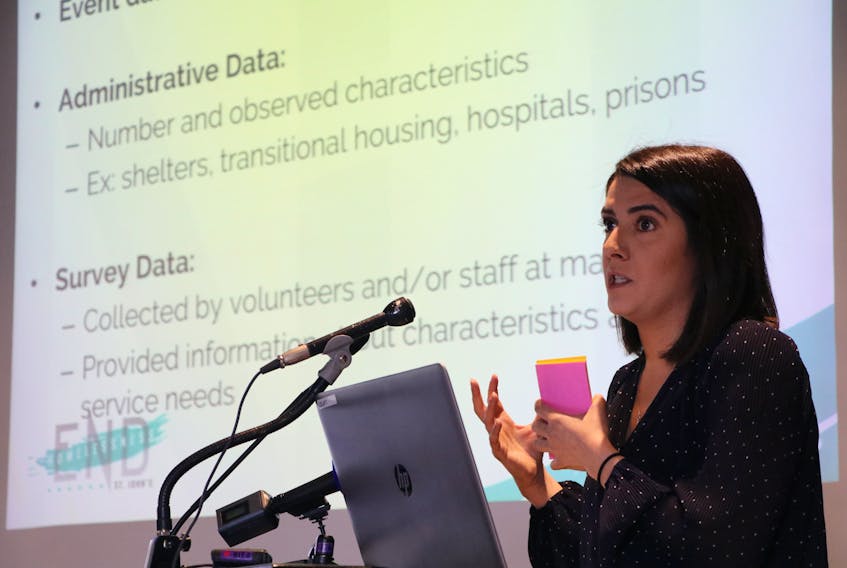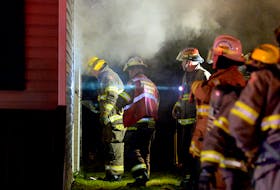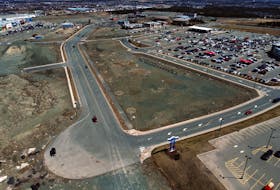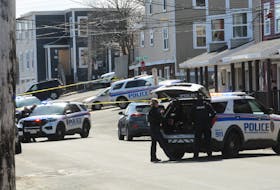On April 11 of this year, 165 people were counted as being the minimum number of those homeless in St. John’s on that particular day.
That’s the result of End Homelessness St. John’s “Everyone Counts 2018” point-in-time (PIT) count in the city.
Of those surveyed, a least 15 were being released from correctional institutions within 30-days with no permanent housing prospects, and seven were veterans — either from serving in the military or police forces.
End Homelessness St. John’s chairman Shawn Skinner says the number in the count are just the tip of the iceberg. The group estimates that about 800 people experience homelessness in St. John’s during the course of a year.
Related stories:
St. John's organization optimistic about preventative nature of new federal homelessness program
Count gives glimpse of homelessness in St. John’s
The homeless surveyed ranged in age from 17 to 78 years (respondents under 16 years of age were not eligible to participate); identified as male, female and diverse gender identities; and were both indigenous and non-indigenous. Respondents varied in their levels of education, which ranged from no formal education to post-graduate degrees, as well as their sources of income, which ranged from no income to having employment.

“The PIT count supports our 2014-19 St. John’s community plan to end homelessness by enabling those experiencing homelessness to share their stories and provides us with a deeper understanding of homelessness within our community,” Skinner said.
“The experiences of this group and their unique service needs underscores the urgent need for all of us to work together in collaboration to end homelessness.”
End Homelessness St. John’s released its report Friday which presents the numbers and reasons people find themselves homeless.
Its findings re-enforces information gathered from the first PIT count two years ago. The information paints a picture of homelessness in the city that cuts across ages, genders, cultures and all walks of life.
The report notes that the overrepresentation of indigenous people and the prevalence of adults among the homeless population is concerning, as is the persistence of youth homelessness and the relationship between homelessness and incarceration.
More than 100 volunteers and front-line staff took part in conducting the surveys of homeless people.
Homeless people were located on the streets and at shelters, institutional settings and community sites such as food banks. It included people staying in emergency, private and transitional shelters; individuals outside on the streets, in their vehicles or abandoned buildings; and those staying temporarily at someone else’s home or in institutions with no stable housing upon release.
Pegah Memarpour, project co-ordinator, said the 165 number in the time count is described as the minimum number because there are homeless people the survey cannot capture for various reasons.
“A lot of that has to do with the hidden homeless population,” she said. “There’s a large group of individuals who are sleeping on people’s couches, who are re kind of in and out of different places, who may be in and out of different housing units. And, really, they are hard to capture because they don’t necessarily avail of all the services that are available in the community so they won’t be going Stella’s Circle, or Choices for Youth or the food bank. It may be the first time they are experiencing homelessness and they don’t know what is actually available out there. So, it’s really difficult to capture those people because they are really not visible.
“Women is a huge population that is not visibly homeless. They are in and out with friends, with partners, and you won’t get to interact with them in the community organizations, and as a result we don’t see them and they are really hard to capture. Sometimes people don’t want to be captured. There’s a stigma surrounding homelessness and they don’t want to be counted or surveyed.”
The report states the time count also affirms that homelessness is not a choice, that while all respondents faced barriers in obtaining housing, “not wanting permanent housing was not one of them.”
It also states that the combination of survey and administrative data allows communities to gather useful information about the demographic and service needs of those experiencing homelessness. Collecting this information is essential for helping communities design and deliver services that meet the needs of this diverse population, the report states.
Bruce Pearce, who heads up community development with End Homelessness St. John’s, noted that seven individuals (8.1 per cent) in the April 11 count were veterans of either the military or a police force. That’s up from 4.8 per cent in the 2016 PIT count.
“We need to get better at preventing homelessness in the first place and stopping pathways that lead to homelessness,” Pearce said.
Also of note in the report:
• substance abuse and an inability to pay rent were two of the leading factors for homelessness for adults;
• While approximately 40 per cent of respondents over the age of 25 indicated having some form of post-secondary education or graduation from a post-secondary institution, only 13.8 per cent indicated having some form of employment;
• Low income (57.6 per cent), in combination with the high cost of rental units (43.5 per cent) in St. John’s were cited as the top two barriers to obtaining ;
• Almost 60 per cent of respondents who migrated to St. John’s came from other parts of Newfoundland and Labrador, with 40 per cent moving within the last five years. Access to supports and services was the most commonly cited reason for moving to St. John’s from other parts of the province.
End Homelessness St. John’s is a community-led, collective impact board bringing together all sectors to implement a plan to prevent and end homelessness in St. John’s.









